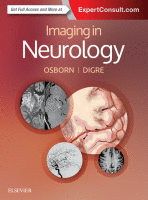Physical Address
304 North Cardinal St.
Dorchester Center, MA 02124

KEY FACTS Terminology HIV/AIDS-related opportunistic infections and neoplasms Imaging Findings Primary CNS lymphoma: Enhancing lesions, often hemorrhagic/necrotic within basal ganglia, periventricular white matter Kaposi sarcoma: Intense enhancing soft tissue mass in scalp Bacterial abscesses: Ring-enhancing lesion with ↑ signal on…

KEY FACTS Terminology I mmune R econstitution I nflammatory S yndrome (IRIS) Atypical/worsening opportunistic infection HIV/AIDS patients following commencement of HAART Patients with MS, immunomodulatory therapy Imaging Progressive multifocal leukoencephalopathy (PML)-IRIS White matter (WM) hypodensities with ↑ mass Patchy atypical…

KEY FACTS Terminology Progressive multifocal leukoencephalopathy (PML) Subacute opportunistic infection caused by DNA virus JC polyomavirus (JCV) JCV infects oligodendrocytes, causes demyelination in immunocompromised patients Associated with immunosuppression, often AIDS Organ transplant, cancer, chemotherapy, myeloproliferative disease, and steroid treatment Reported…

KEY FACTS Terminology Cryptococcus neoformans infection Opportunistic fungal infection that typically affects HIV and other immunosuppressed patients Cryptococci spread along perivascular spaces (PVS) to deep brain: Basal ganglia, thalamus, brainstem, cerebellum, dentate nucleus, periventricular WM Imaging Dilated PVS in deep…

KEY FACTS Terminology Coccidioidomycosis, histoplasmosis (sporadic, common) Blastomycosis (rare, sporadic, generally lungs/skin) Invasive fungal infection (immunocompromised) Candidiasis (common) Aspergillus, mucormycosis (angioinvasive) Imaging Varies with type, site of infection, immune status MR ± contrast (add T2* for hemorrhage) Invasive fungal sinusitis…

KEY FACTS Terminology Acquired CNS cytomegalovirus (CMV) infections: Meningitis, encephalitis, ventriculitis, transverse myelitis, radiculomyelitis, chorioretinitis Immunocompromised (AIDS, organ transplant) patients are at risk → reactivation of previously silent infection Imaging Best diagnostic clue: Ventriculitis with fluid-debris level and ependymal enhancement…

KEY FACTS Terminology Opportunistic infection Caused by parasite Toxoplasma gondii Most common opportunistic CNS infection in AIDS Imaging CT Ill-defined, hypodense lesions and edema Basal ganglia, thalamus, cerebellum Rim, nodular, target enhancement MR T2 hypointense T1 C+ target sign highly…

KEY FACTS Terminology HIV-1 encephalitis/HIV-1 encephalopathy HIV-associated neurocognitive disorders Imaging CT Atrophy Bilateral periventricular/diffuse WM hypointensities Basal ganglia, cerebellum, brainstem hypodensity MR Diffuse “hazy” hyperintense WM on T2/FLAIR Nonenhancing (if enhancement present, consider opportunistic infections, immune reconstitution inflammatory syndrome) Pathology…

KEY FACTS Terminology Lyme disease, Lyme neuroborreliosis (LNB) Multisystem inflammatory disease Caused by spirochete Borrelia burgdorferi (USA) Transmitted by Ixodes tick bite Reservoirs = white tail deer/field mouse Imaging MS-like white matter (WM) lesions (may enhance) 2-8 mm (large “tumefactive”…

KEY FACTS Terminology Intracranial parasitic infection caused by pork tapeworm Taenia solium 4 pathologic stages: Vesicular, colloidal vesicular, granular nodular, and nodular calcified Imaging Best diagnostic clue: Cyst with “dot” inside Convexity subarachnoid spaces most common location Inflammatory response around…